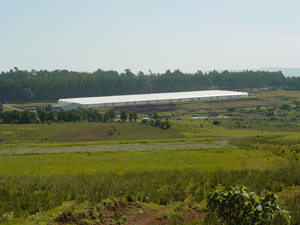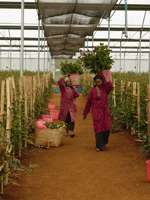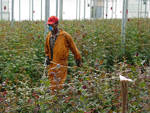
Vermont - Ethiopia - Kenya Collaborations



 |
 |
 |
 |
 |
 |
This success has prompted investment in other developing countries,
such as Ethiopia, who see export horticulture as an increasingly
important component of their agricultural economy, and a major force
for sustained rural development. The cool climate in the Ethiopian
highlands is ideal for production of roses and other high-value cut
flowers. Greenhouse production capacity is expected to increase 3-4
fold in the next 1-2 years alone. A vibrant greenhouse industry will
provide business and employment opportunities in areas traditionally
under-served by industrial developments in larger population centers.
Greenhouse production is the pinnacle of intensive agriculture,with
large amounts of high-value plant material grown in a relatively small
area. The income-generating potential of greenhouse grown cut flowers
far exceeds that of any traditional field crop in Ethiopia. Furthermore
in protected agriculture, the growing season is extended far
beyond that feasible for many field crops. Conditions are optimized for
plant growth, but these also favor the rapid increase of pest
populations and spread of diseases. Pest control strategies are heavily
reliant upon chemical pesticides, and toxic materials with long
residuals are commonly used. But this is neither sustainable nor
desirable from an economic, human-health or environmental perspective.
Currently, Ethiopian cut flowers are primarily sold to retailers in
Italy, but access to other countries in Europe, and emerging markets in
Asia and the middle East will be required to sustain the current rate
of industry growth. Production of high-quality, pest-free and
pesticide residue-free flowers will be essential to maintain and
increase this access, necessitating change in crop protection
strategies to ones that are based upon the use of cultural and
biological controls.